Gasterosteiformes: Sticklebacks
This order is made up of two suborders: Gasterosteoidei and Syngnathoidei. There are a few skeletal characteristics, and many species have dermal plates. Let's take a look!
Gasterosteoidei
This suborder is actually kind of tiny, with only 14 species in nine genera. They're kind of cool though, because supposedly their kidneys produce a gluey substance which the males use to hold their nests together! How would you like it if you started leaking Elmer's one day?
Hypoptychidae: Sand Eel
There is only one species, Hypoptychus dybowskii, although newer classifications have placed Aulichthys japonicus in this family as well (moved from Aulorhynchidae). These elongated fish lack scales, scutes, or spines, along with a lack of pelvic fins or girdle. According to Fishbase, A. japonicus lays its eggs inside of Ascidians (the scientific term for sea squirts).
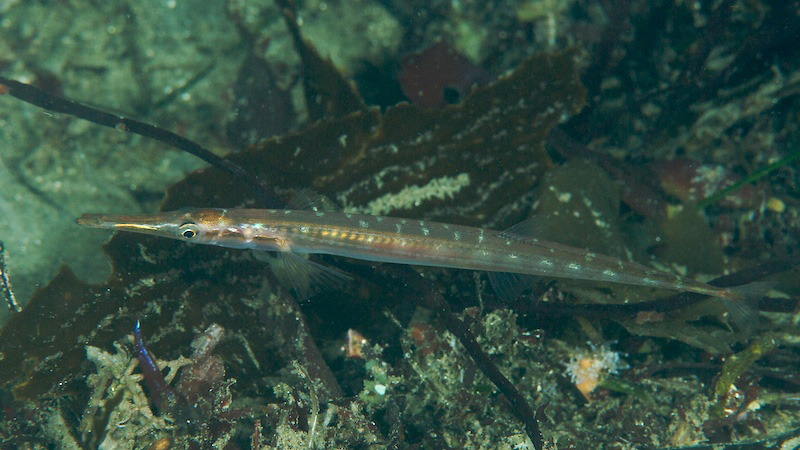
Aulorhynchidae: Tubesnouts
With the changes noted above, this family contains one species, Aulorhynchus flavidus. They are also elongated fish, and have isolated dorsal spines along their dorsal surface, with a true dorsal fin located posteriorly. They use their kidney secretions to glue their eggs to kelp.

Gasterosteidae: Sticklebacks
These fishes have elongate bodies...or not. They have bony scutes...or not. Not the greatest set of characteristics, so identify them by the isolated dorsal spines (the STICKLES on their BACKS). All species have male parental care. These fishes are often used for genetic and other biological studies.
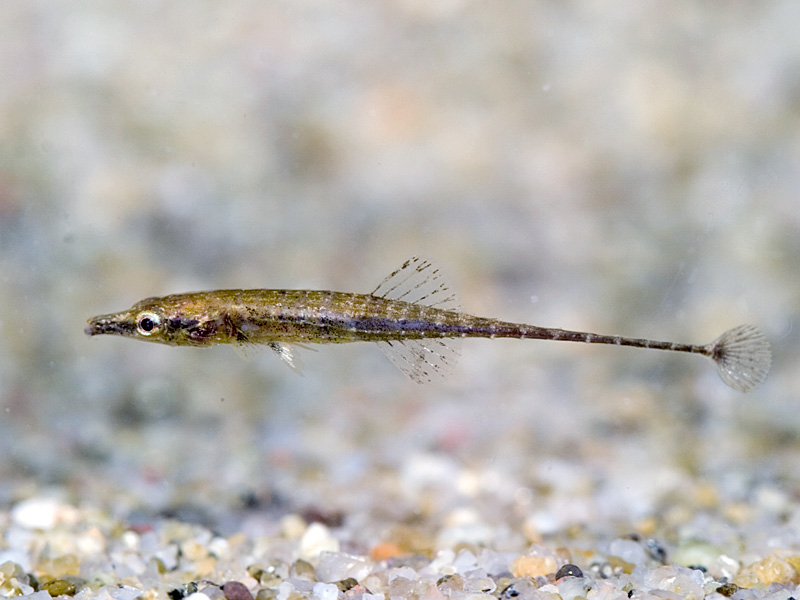
Indostomidae: Armored Sticklebacks
There is one genus, Indostomus. These fishes deserve their armored name, being covered in bony scutes. They have an extremely thin body, with a smallish fan-shaped tail.
Syngnathoidei
This group is larger than Gasterosteoidei, containing more than 250 species. They have long, tube-like snouts, and lack a protractile upper jaw.

Pegasidae: Seamoths
This family is occasionally grouped in Gasterosteoidei. They have a strange body shape, being flattened with the pectoral fins spread laterally like wings. They are covered in bony plates and have an elongated rostrum, with the mouth beneath.
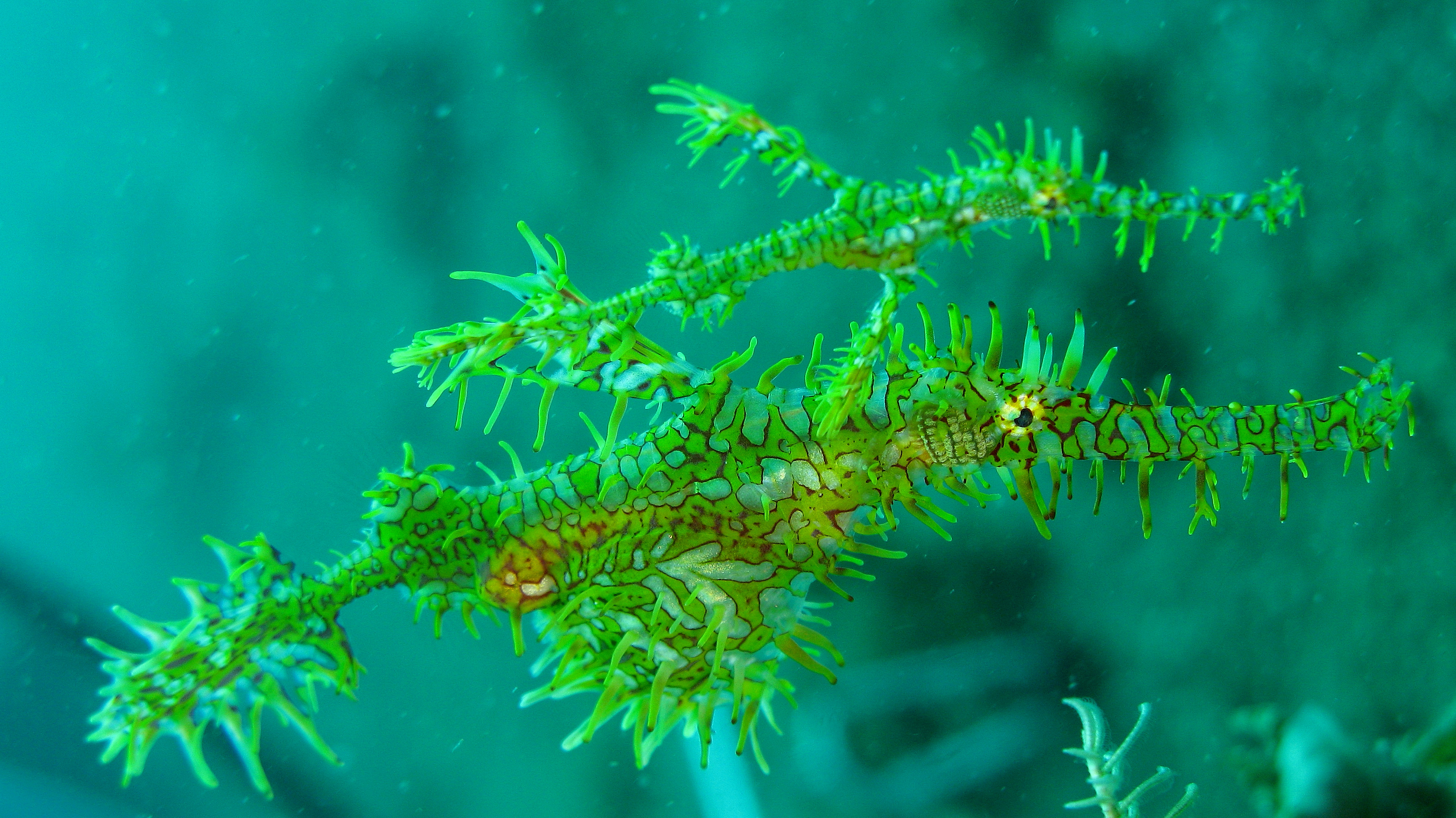
Solenostomidae: Ghost Pipefishes
There is one genus, Solenostomus. They may look similar to the more well-known pipefishes in Syngnathidae, but there are a couple discerning traits. They have large bony plates covering the body, a tall, spiny first dorsal fin, and large pelvic fins which the female (not the male) uses to care for the eggs.

Syngnathidae: Pipefishes, Seahorses
This group is a favorite for many aquarium visitors, and contains the majority of the species in this suborder. They have elongated bodies, with a series of bony rings encircling the body. They have one small dorsal fin, a small anal fin, and lack pelvics entirely. Due to their small fins, they cannot move quickly, but are able to precisely control their movements instead. The tail (caudal peduncle) may be prehensile, allowing the fish to hold onto an object for balance in the current. They have only one kidney (located on the right side), and the males care for the young in a special area of their bodies. Seahorses make up only one genus (Hippocampus), with the other 51 genera in the subfamily Synganthinae, for the pipefishes and seadragons. Many species (like the one pictured) avoid predation through camouflage.

Aulostomidae: Trumpetfishes
There is one genus Aulostomus. These elongated fishes are very recognizable, having a long tube snout, a barbel on the chin, and a rounded caudal fin. These fishes are ambush predators, floating along until they reach their prey, then creating a powerful vacuum to suck up their food. Aulostomus maculatus is one of my favorite species to find when diving in the Caribbean, as they can grow relativley large and don't usually swim away when approached!

Fistulariidae: Cornetfishes
THere is one genus, Fistularia. This family is similar to the trumpetfishes but can be distinguished in a couple ways. They lack the chin barbel and have a sharply forked caudal fin. There is also a long filament that trails from the middle of the caudal fin. They too have the tube mouth, and feed in a similar fashion.
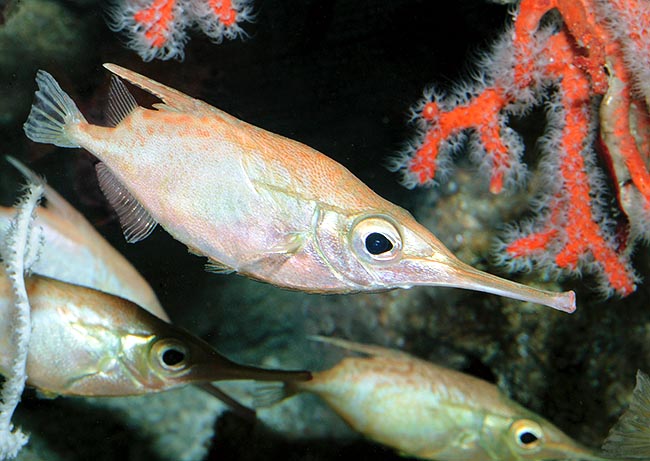
Macroramphosidae: Snipefishes
These fishes have compressed bodies with a deep keel. They have a long tube snout, and the second dorsal spine is extremely long. They are often grouped into Centriscidae.
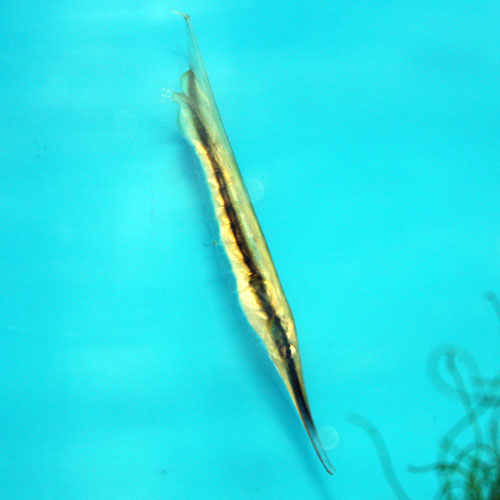
Centriscidae: Shrimpfishes
These strange looking fishes look as if someone tried to rearrange their body plan and failed horribly. They are extremely compressed and covered in bony plates originating from the vertebrae. The dorsal fin is at the rear of the body, with a long first dorsal spine pointing straight out the posterior. The soft dorsal and caudal fins are at the rear, pointing ventrally. The fish swims vertically with its head pointed downwards.